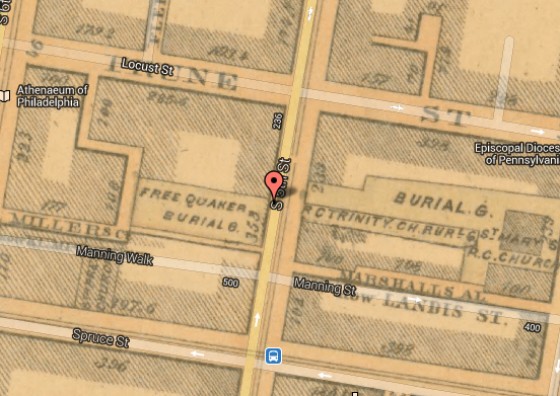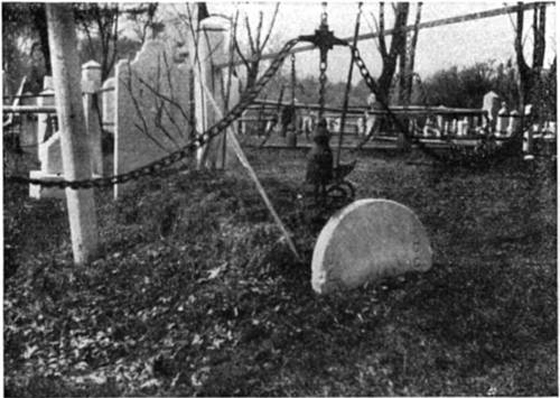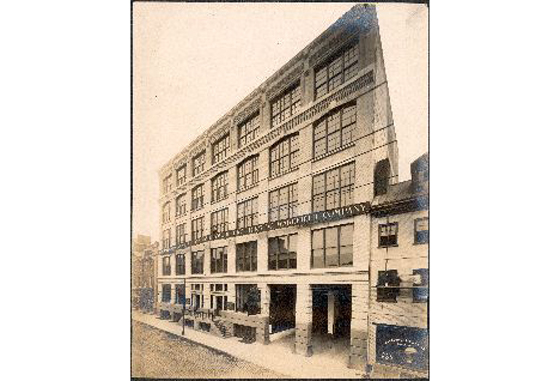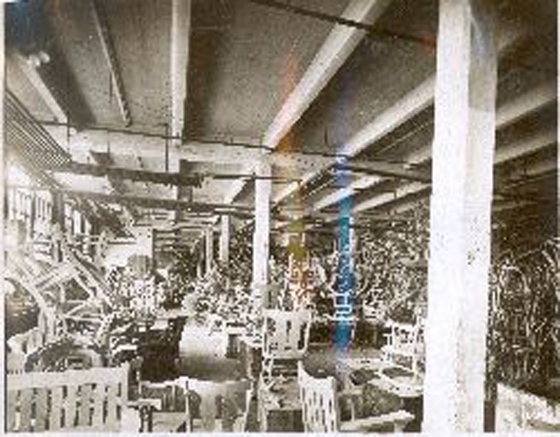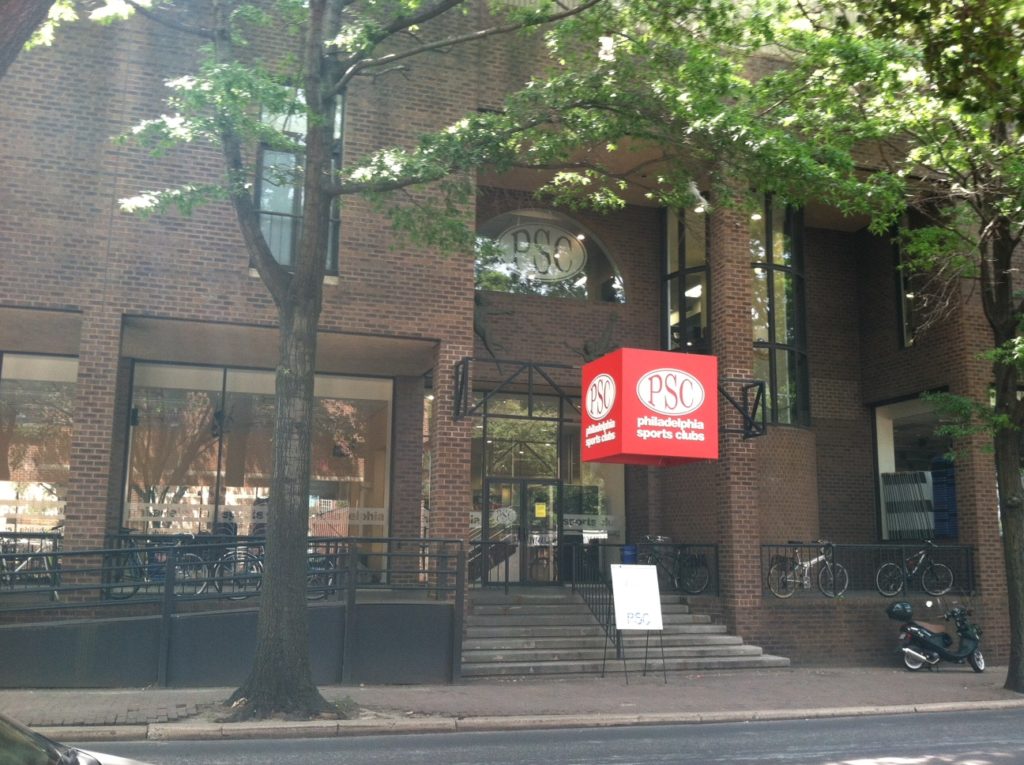And now, another exciting edition of ‘places where Philadelphians used to be buried.’ Next time you’re chugging along on the elliptical or rocking through your Zumba class at Philadelphia Sports Club on South 5th Street, try not to think about the countless excommunicated Quakers that were once buried there. Just a few blocks south of the Quaker Meeting House on 5th & Arch, the Free Quaker Burial Ground was established in the late 18th century. Indeed, its founding was of some historical significance, necessitated as it was by the ideological divide between loyalist and revolutionary Quakers over the impending War for American Independence. Those who supported the war had been excommunicated but could still enjoy a Quaker burial just a few blocks away. Samuel L. Smedley’s 1862 Philadelphia Atlas shows the Free Quaker Burial Ground in the location that roughly equates to 250 S. 5th St. Today.
Further underscoring the cemetery’s historical importance was one of its early 19th century residents. According to CBS Philly, “Betsy Ross [excommunicated for marrying a non-Quaker] was first buried at the Free Quaker Burial Ground on South 5th Street in 1836. Twenty years later, her remains were exhumed and reburied in the Mt. Moriah Cemetery in Philadelphia, the family gravesite.” Showing the deference befitting Old Glory’s seamstress, historians would dig her up and move her once more in 1975. The image here below, from About Women’s History, though undated, claims to depict the Ross gravesite. We are inclined to assume this is the Mt. Moriah site.
Meanwhile, back at South 5th Street, the remaining Free Quakers were preparing for a big move as well. Evidence seems to suggest that the burial ground was relocated to Audubon, PA, making way for the next phase in the plot’s history. It was in the year 1897, according to Wikipedia, that furniture business competitors Heywood Brothers and Wakefield Company merged to form the aptly named Heywood-Wakefield Company. The high-end furniture manufacturers would not only go on to achieve great popularity in the business, but today, many of their pieces are highly valued as collectibles. Their expansion would allow the Massachusetts-based company to establish facilities in Philadelphia, which took up the former cemetery plot in 1908. The photos below, taken from the Philadelphia Architects and Buildings collection, show the building sometime between 1907 and 1915.
According to The Internet Archive, the building was still in operation for Heywood-Wakefield in 1926. However, by the early 1940s, the company’s markings no longer appear on maps. Various businesses would move through the structure thereafter. In the photo below, taken from the Department of Records, we see that Cramer’s Manufacturing Company was selling baby carriages out of the location.
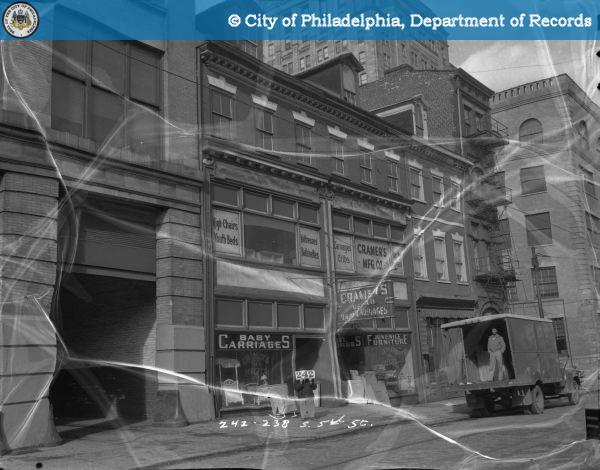
Cramer’s Manufacturing Company in 1957; baby carriages may not meet today’s consumer safety standards
Cramer’s could not have been there long. By 1962, the building’s occupants would be J. Reisman & Sons, immigrants from Kiev who achieved success marketing twisted pretzels and other snacks. By sharp contrast to the implications of making and selling pretzels to a city with no shortage of carbohydrate heavy dining tendencies, the location is occupied today by the Philadelphia Sports Club fitness facilities.
–David Tomar

